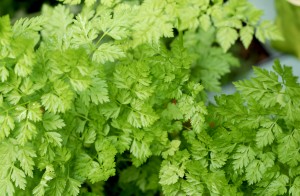Notes From A Plant Freak, February 2013
Is It Wrong To Grow In The Desert?
Some people reason that gardening in this climate is a waste of water. Others suggest that the desert is no place for gardening at all. The author admits to having a prejudice toward being pro-gardening. But there are some really good reasons we, in the desert southwest, should be gardening.
First of all, humans have been growing food in the Tucson basin for as long as people have been living in this part of the world. The truth is, Arizona is one of the best places to grow plants. The sun, the soil, and yes, the water, enable people to grow a wide variety of plants.
Arizona is indeed an arid land. Global warming is quickly turning a lot of land that humans live on into arid climates. We need to innovate and develop ways to produce food in climates like our own because soon there will be few other choices for places to grow. We must not avoid our low resource problem but rather engage in the issue head-on in a creative and inventive way.
Arizonans are no different than anyone else in the world: we need to be closer to our food. The movement to localize our diet is rooted in the idea that we are spending too much importing our subsistence (using up fossil fuels, money, time and other resources) when we could be much more efficiently providing for ourselves. This means encouraging local farming and it is even better if the food comes from our own backyards.
Backyard gardens have the capability of growing much more efficiently than commercial growers can manage. We can afford the time to mulch the base of the plants–agriculture fields are almost never mulched because they cannot afford to cover acres of land with such material. We can carefully shape beds to collect rainwater, and prevent run-off. We have the ability to pay attention to our garden, and manage them by the square foot, while large-scale farmers must think in acres.
There are many ways we can cut back on water use: switching to efficient faucets and other appliances, altering our daily habits to not be wasteful, using native and drought tolerant plants in the landscape, encouraging our local economy to invest in crops that are more appropriate to our climate (commercially growing jojoba instead of lettuce), and utilizing “grey water” or cleaning up wastewater and using it to recharge the water table. But to suggest that growing food is a waste of water is looking at the issue through tunnel vision and oversimplifying the challenges we face living on arid lands.
Seasonal Guidelines
Pay close attention to the garden as it warms up. We will still be having cold snaps, but the temperatures are increasing, and spring will eventually also bring wind, which can really dry out the garden. Mulch, mulch, mulch the garden. You can start pruning back frost-damaged growth on landscape and ornamental plants. Still be prepared to cover on the cold nights. It is also time to divide plants like mint, oregano, lemongrass, etc. You can plant the divisions in new locations or share with friends/neighbors. Dividing freshens up the plant, and stimulates new growth.
You should be getting ready for the warm season. Make some room . Time to plant tomatoes, eggplants, peppers, peas, corn, squash, and more if you want to get a good spring crop in. Protect them from any frost. Continue planting any winter crops you aren’t sick of, paying attention to how many days your variety takes to mature. It is too late for crops that need a long time to mature. It is time to plant most perennial crops: artichokes, herbs, fruit trees, strawberries, blackberries, asparagus and more. This is the beginning of the best growing season we have, where both cool and warm season plants provide a vast diversity in the garden.
Jared R. McKinley maintains a gardening and homesteading blog called Arid Land Homesteaders League at AridLandHomestead.com




 For the seventh time in as many years, the Tucson Jazz Society is hosting a gala New Year’s Eve Jazz concert at the JW Marriott Starr Pass Resort and Spa. This year the line up includes a triple bill of headliners who each have a new CD about to be released. Rick Braun, Richard Elliot and Pete White will help Tucson Jazz fans ring in the new year in style. Joining the bill is the Tucson Jazz Institute’s award winning Ellington Band which features many up and coming musicians who promise to impress. A five-course gourmet meal, silent auction and champagne toast at midnight will round out the evening which will also be raising funds to support the Tucson Alliance for Autism, The National Autism Society and the Tucson Jazz Society’s Youth Music Education Program. For tickets and more information visit
For the seventh time in as many years, the Tucson Jazz Society is hosting a gala New Year’s Eve Jazz concert at the JW Marriott Starr Pass Resort and Spa. This year the line up includes a triple bill of headliners who each have a new CD about to be released. Rick Braun, Richard Elliot and Pete White will help Tucson Jazz fans ring in the new year in style. Joining the bill is the Tucson Jazz Institute’s award winning Ellington Band which features many up and coming musicians who promise to impress. A five-course gourmet meal, silent auction and champagne toast at midnight will round out the evening which will also be raising funds to support the Tucson Alliance for Autism, The National Autism Society and the Tucson Jazz Society’s Youth Music Education Program. For tickets and more information visit 
 Gardening is a Seedy Business
Gardening is a Seedy Business The Toole Avenue Arts Bazaar is an outdoor arts offering for the entire community, featuring more than 50 local and Warehouse District artists. This is the first time in Solar Culture’s 25 year history that it is taking the art to the streets. Find that perfect art treasure at an affordable price. And meet your favorite local artists.
The Toole Avenue Arts Bazaar is an outdoor arts offering for the entire community, featuring more than 50 local and Warehouse District artists. This is the first time in Solar Culture’s 25 year history that it is taking the art to the streets. Find that perfect art treasure at an affordable price. And meet your favorite local artists. Post-Open Studio Tour Exhibit
Post-Open Studio Tour Exhibit FREE FAMILY FESTIVAL IN THE PARK SATURDAY, NOVEMBER 17TH
FREE FAMILY FESTIVAL IN THE PARK SATURDAY, NOVEMBER 17TH



Also find us on...